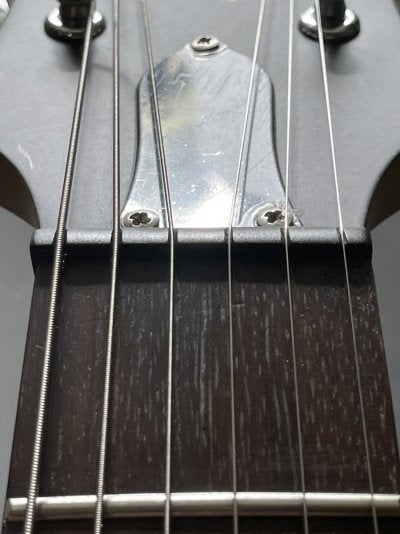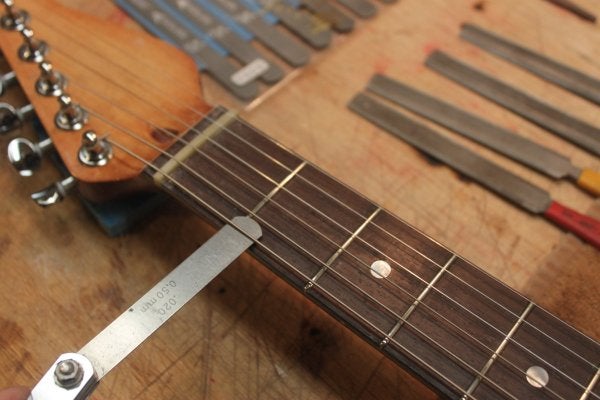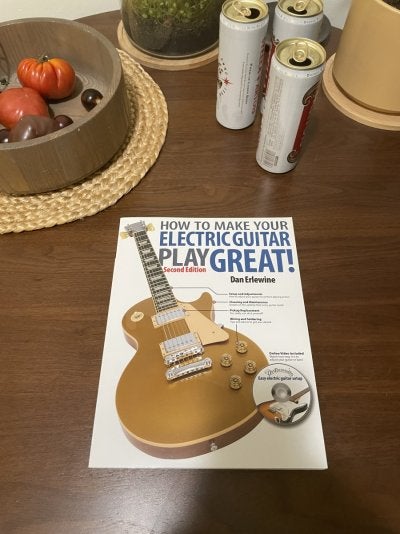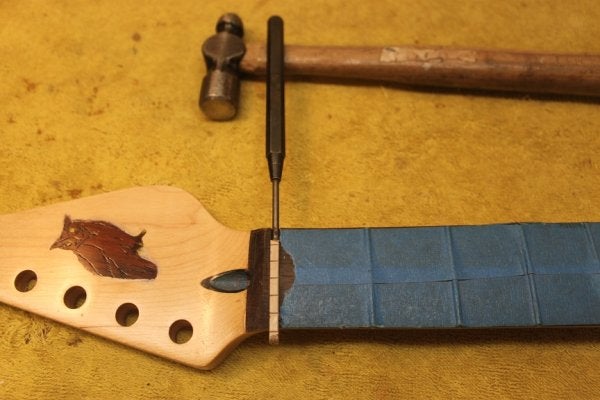Johnny Dubs
Tele-Holic
I’ve never filed nut slots and I’m about to embark on some extensive research so thought I’d start here.
Protection, absolutely. I just saw a note about that in a thread re shaping the top of a preinstalled nut; I was going to rely on tape tbh, so thanks. Might not be as dangerous, what I’m doing, but I’m historically less careful than I should be.
What other quick advice would you give someone?
I’m working on a $50 epi special (pawn shop find complete with box and non-working bridge pickup.)
I plan to upgrade the nut at some point; I haven’t measured yet but the factory slots are all cut too high (and too close to the same depth?) for my taste.
I’m going to use this to learn what I’m doing. Wanna help me figure out what I’m going to do wrong, you know, before I sin?
Thanks in advance, and have a great weekend!
Protection, absolutely. I just saw a note about that in a thread re shaping the top of a preinstalled nut; I was going to rely on tape tbh, so thanks. Might not be as dangerous, what I’m doing, but I’m historically less careful than I should be.
What other quick advice would you give someone?
I’m working on a $50 epi special (pawn shop find complete with box and non-working bridge pickup.)
I plan to upgrade the nut at some point; I haven’t measured yet but the factory slots are all cut too high (and too close to the same depth?) for my taste.
I’m going to use this to learn what I’m doing. Wanna help me figure out what I’m going to do wrong, you know, before I sin?
Thanks in advance, and have a great weekend!
Attachments
Last edited:





